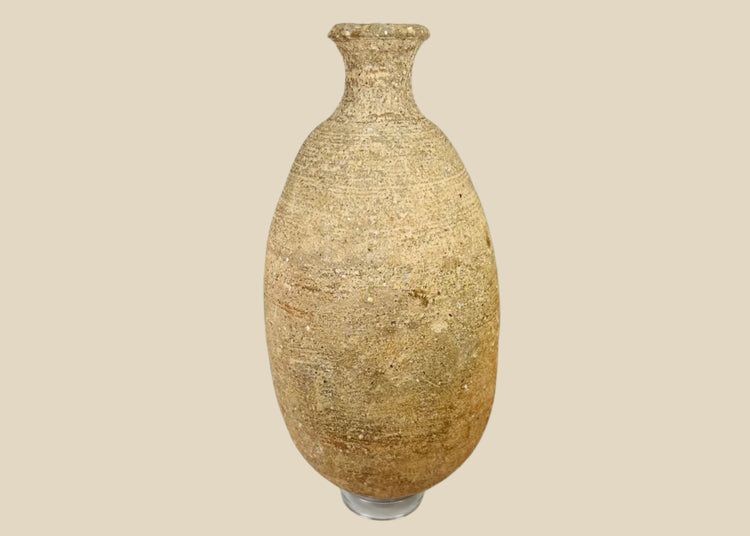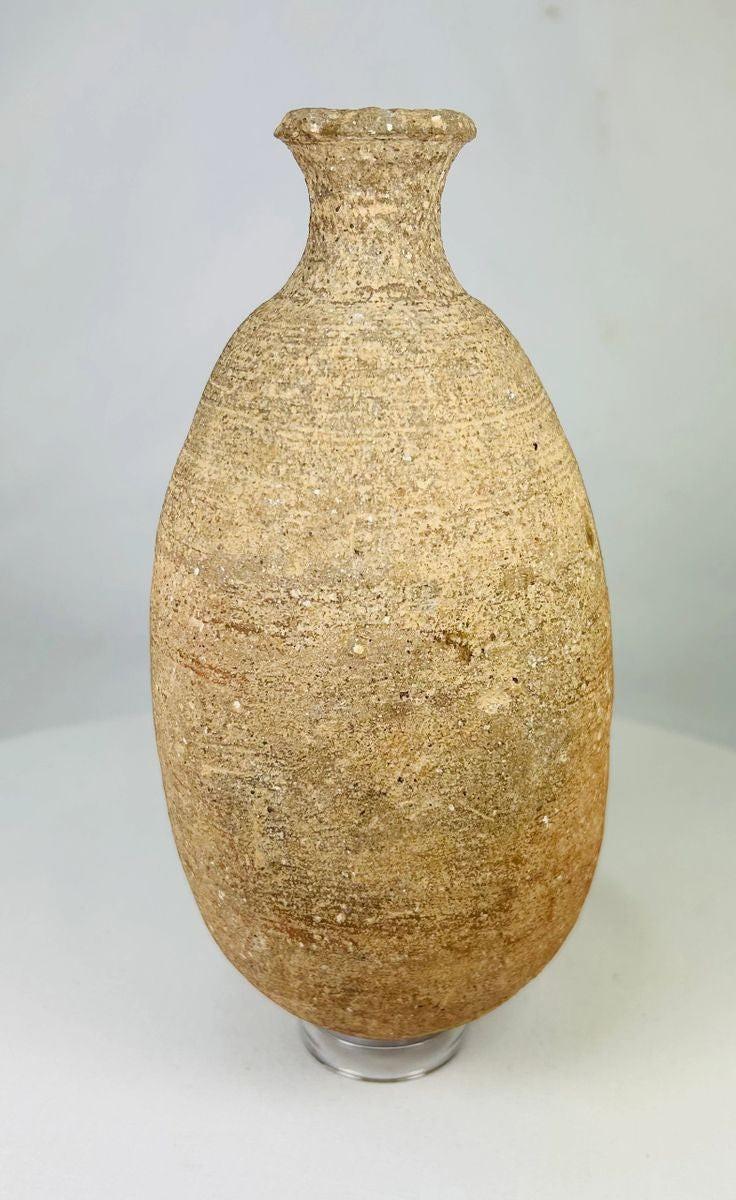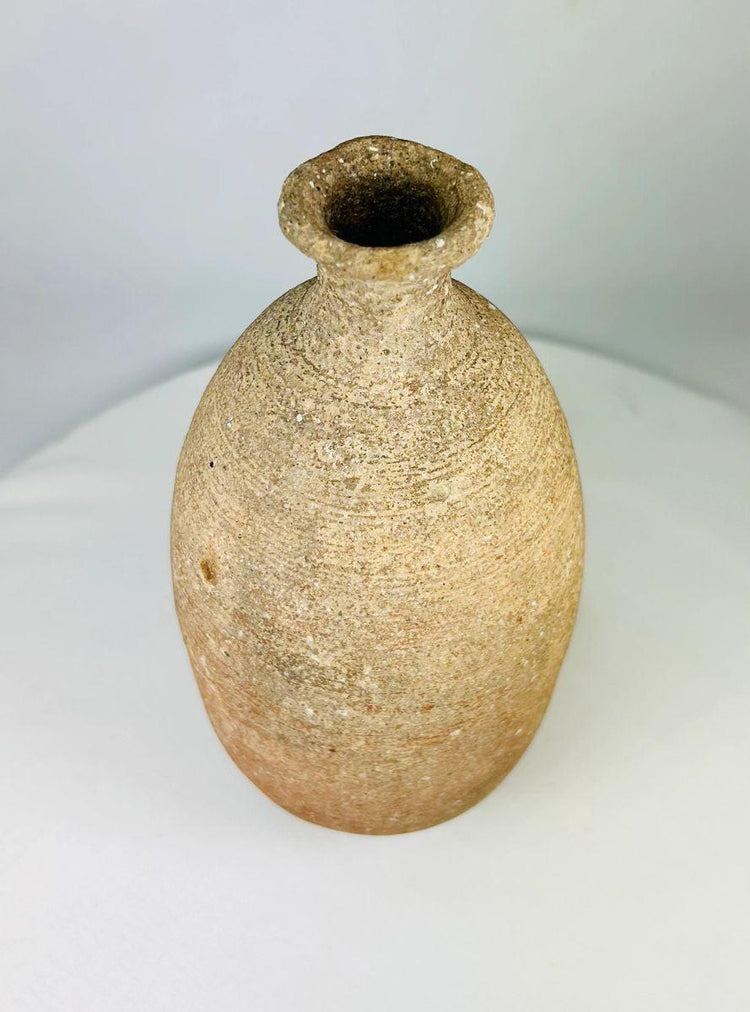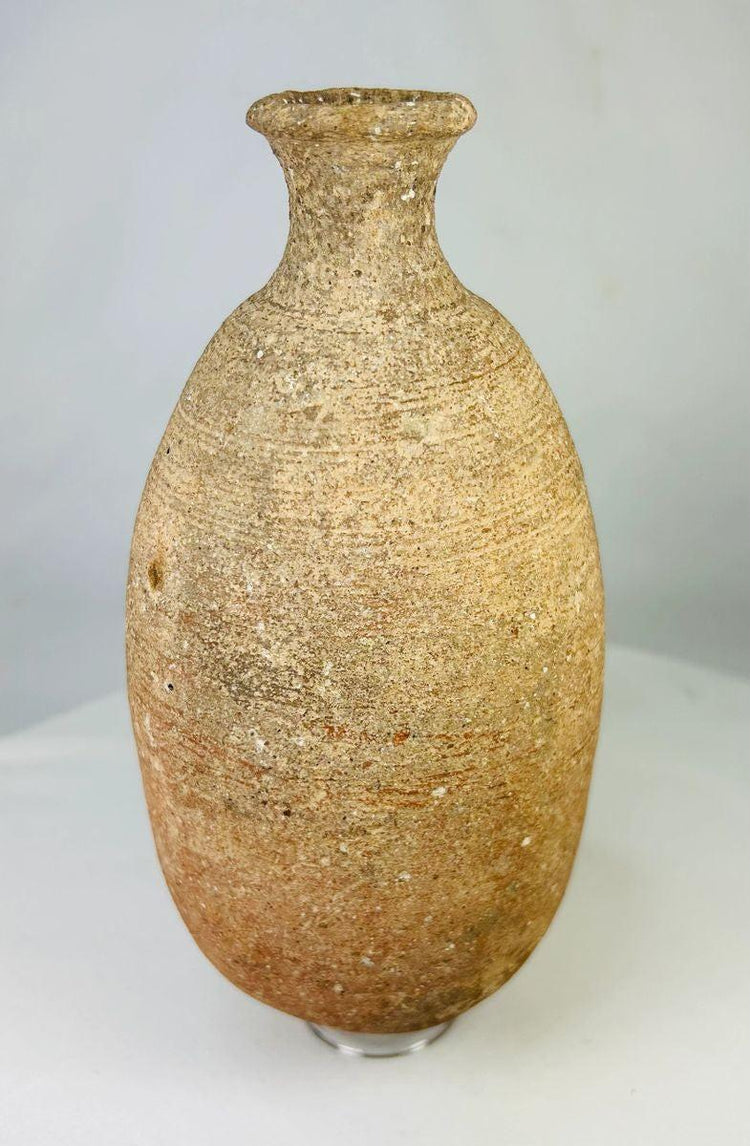Greco-Roman | Terracotta | Storage Amphora | Circa 1st–3rd Century CE
Description
More
Less
Historical Context & Origin
Region: Mediterranean, Greco-Roman World
Material: Terracotta clay
Period: 1st–3rd Century CE
Description
This finely preserved amphora represents the artistry and practicality of Greco-Roman ceramic production. Dating to the height of Mediterranean trade and cultural exchange, amphorae such as this were indispensable vessels for transporting and storing wine, oil, and grain. Its gracefully rounded body tapers into a narrow neck with a flared rim, while subtle ridges along the exterior bear the hallmark of skilled potter’s wheel craftsmanship.
Features
- Rounded body with narrow neck and flared rim
- Subtle ridges from potter’s wheel shaping
- Terracotta clay with warm, earthen tones
- Natural patina developed from centuries of burial
- Excellent preservation with minor wear consistent with antiquity
Cultural Significance
Amphorae were at the core of Greco-Roman daily life, functioning as both household storage vessels and essential tools of commerce. Their role in transporting goods across the Mediterranean underscores the interconnectedness of ancient economies. Beyond utility, the amphora also reflects the aesthetic sensibilities of Greco-Roman artisans, balancing durability with elegant design. This piece embodies both the functionality and artistry of the ancient world, serving as a tangible connection to trade, ritual, and domestic life.
Condition
The amphora is in excellent archaeological condition, retaining strong structural integrity with only minor wear consistent with age. The surface bears a natural earthen patina that has developed over centuries of burial, adding both authenticity and historical character. Small abrasions and subtle weathering are present but do not detract from its visual or structural quality. No modern restoration is evident.
Dimensions (approximate)
Height: 7.75 in
Age
Approximately 1,700–1,900 years old
Description
Historical Context & Origin
Region: Mediterranean, Greco-Roman World
Material: Terracotta clay
Period: 1st–3rd Century CE
Description
This finely preserved amphora represents the artistry and practicality of Greco-Roman ceramic production. Dating to the height of Mediterranean trade and cultural exchange, amphorae such as this were indispensable vessels for transporting and storing wine, oil, and grain. Its gracefully rounded body tapers into a narrow neck with a flared rim, while subtle ridges along the exterior bear the hallmark of skilled potter’s wheel craftsmanship.
Features
- Rounded body with narrow neck and flared rim
- Subtle ridges from potter’s wheel shaping
- Terracotta clay with warm, earthen tones
- Natural patina developed from centuries of burial
- Excellent preservation with minor wear consistent with antiquity
Cultural Significance
Amphorae were at the core of Greco-Roman daily life, functioning as both household storage vessels and essential tools of commerce. Their role in transporting goods across the Mediterranean underscores the interconnectedness of ancient economies. Beyond utility, the amphora also reflects the aesthetic sensibilities of Greco-Roman artisans, balancing durability with elegant design. This piece embodies both the functionality and artistry of the ancient world, serving as a tangible connection to trade, ritual, and domestic life.
Condition
The amphora is in excellent archaeological condition, retaining strong structural integrity with only minor wear consistent with age. The surface bears a natural earthen patina that has developed over centuries of burial, adding both authenticity and historical character. Small abrasions and subtle weathering are present but do not detract from its visual or structural quality. No modern restoration is evident.
Dimensions (approximate)
Height: 7.75 in
Age
Approximately 1,700–1,900 years old
You May Also Like

















